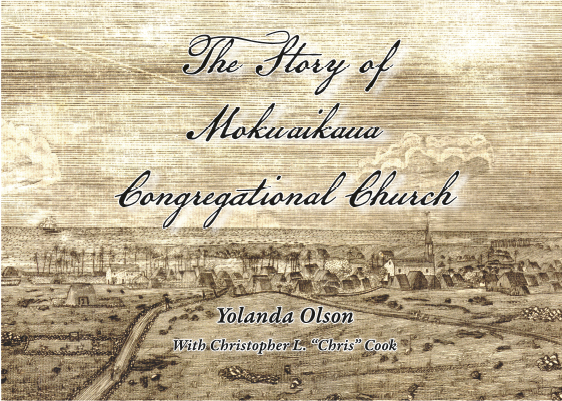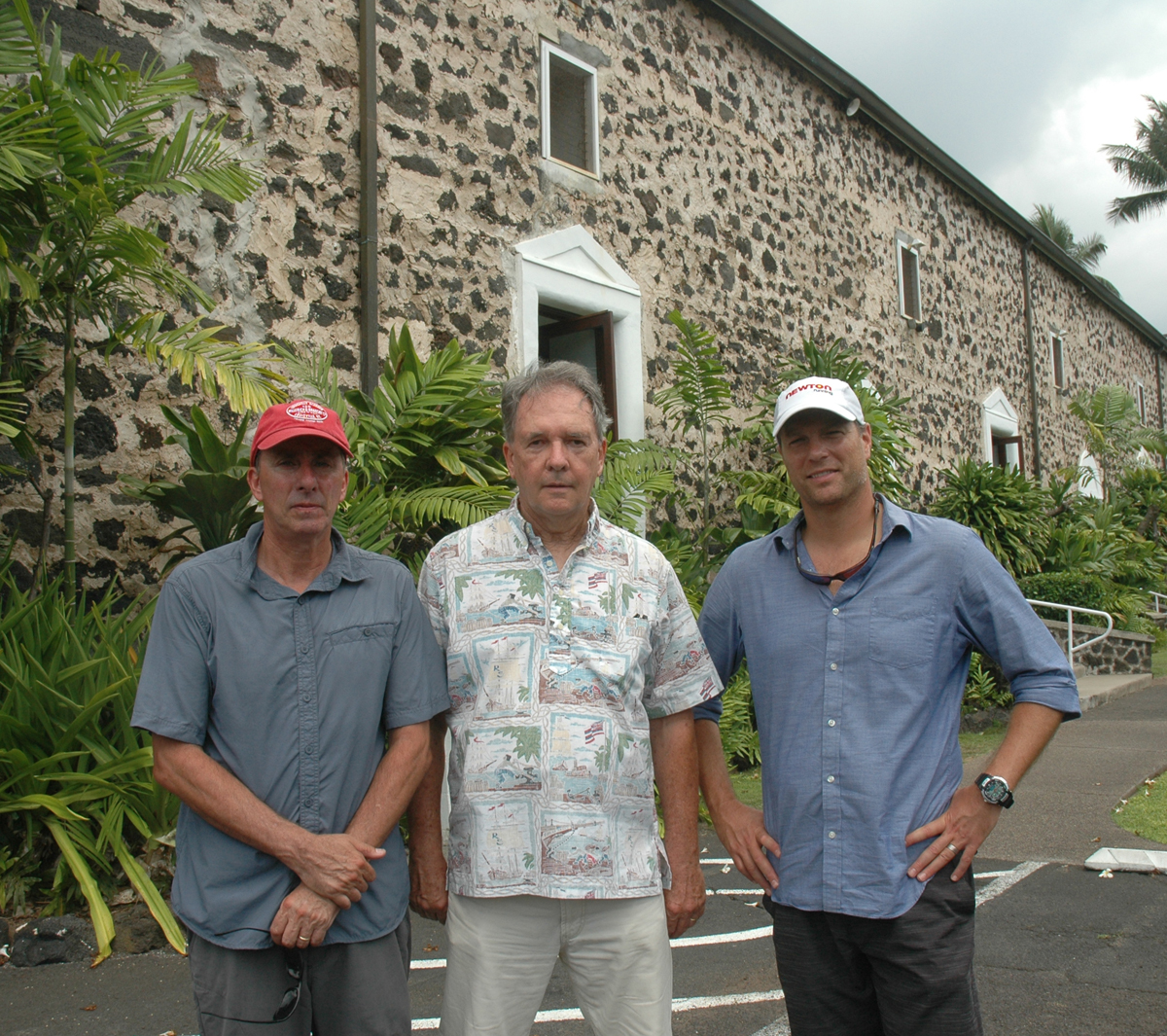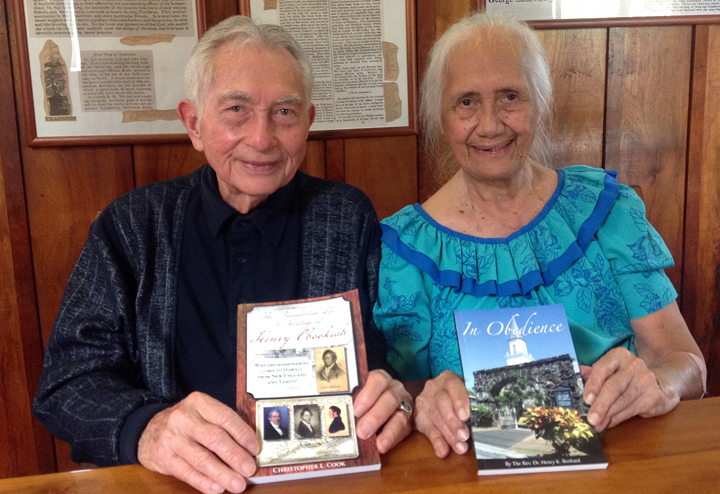
Kahu Henry Boshard and his wife Iris Boshard sit at a regal koa wood table Henry handcrafted in 1968. He rounded the corners of this fine piece of koa wood furniture to resemble a traditional native Hawaiian taro pounding “poi board.” Henry holds a copy of my book, The Providential Life and Times of Henry Obookiah, and Iris holds a copy of In Obedience. Kahu Boshard’s books are available for sale at the Mokuaikaua Church.
The more I uncover historical details from the life of Henry ‘Ōpūkaha‘ia, the more I realize there is much still to be learned.
This week I had the pleasure of meeting the Rev. Henry Boshard Ph.D. and his lovely wife Iris Boshard. Kahu Boshard is the former pastor of the Mokuaikaua Church located on the waterfront in Kailua-Kona, Hawai‘i Island. Henry presented me with a copy of his book In Obedience. Kahu Boshard’s book tells the story of his decades of service (1964-retiring in 2006) as pastor of Mokuaikaua and its sister churches along the sunny Kona coast.
David Ross, a board member and long-time member at Mokuaikaua, arranged the meeting. I hoped to find out more about the childhood years of ‘Ōpūkaha‘ia along the black sand beach and lava rock coastline at Nīnole and Punalu‘u in the Ka‘ū District of Hawai‘i Island. I had read that Kahu Boshard grew up in Punalu‘u. At our meeting in the Thaddeus Room in the Mokuaikaua sanctuary I learned a lot more than expected.
Iris Boshard’s ties to Ka‘ū come through her paniolo father from the Kanaka‘ole family of the Kapapala Ranch. This still-large ranch once stretched from Na‘alehu to Volcano.

A vintage photo of the old Hokuloa Church at Punalu‘u, Hawai‘i Island. Photo from The Master and Disciple by Rev. Dr. Henry Boshard.
Kahu Boshard’s grandmother Adeline Nihokula Akiu related to her family that the location of a beachfront parcel makai of the Hokuloa Chapel at Punalu‘u is the birthplace and childhood home of ‘Ōpūkaha‘ia. The Hokuloa Chapel, which was dedicated in 1957 in honor of ‘Ōpūkaha‘ia, looks out over the beachfront parcel.
Standing at the chapel this week on a one-day ‘Ōpūkaha‘ia tour with Scott Tompkins, long-time Univeristy of the Nations School of Writing instructor, I imagined Henry and his family departing Ka‘ū. Scott and I were there at Kealakekua Bay and at Kahikolu Church in Napo‘opo‘o back in the summer of 1993 when ‘Ōpūkaha‘ia’s remains were returned from Cornwall, Connecticut by his family.
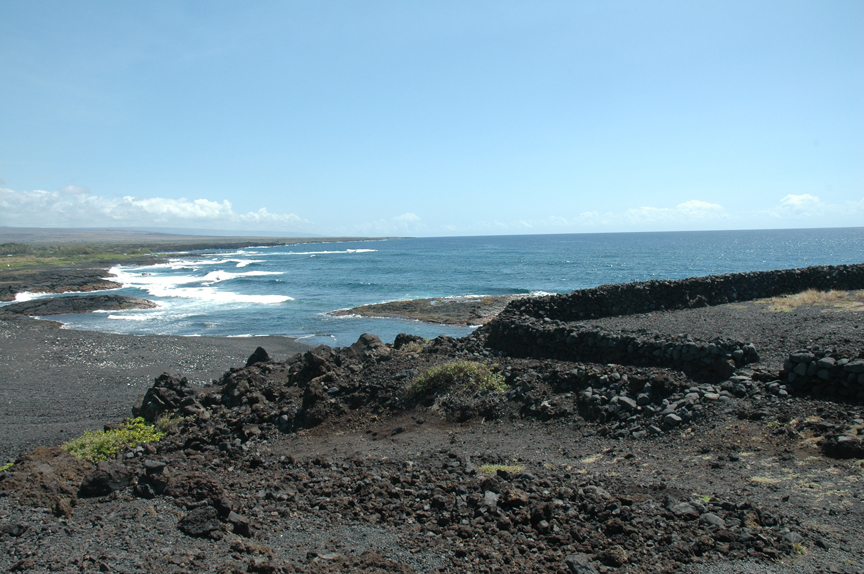
Nīnole looking towards Punalu‘u. The homesite and birthplace of ‘Ōpūkaha‘ia is located several coves north of this black sand beach.
In 1796 ‘Ōpūkaha‘ia’s father served as a minuteman type soldier in a Ka‘ū army marching under orders of the district ali‘i nui. The local chief hoped to reconquer lands taken earlier by Kamehameha, when the king was distracted completing his conquest of O‘ahu. The family’s fate was never to return to their kuleana at Punalu‘u. All except ‘Ōpūkaha‘ia were slaughtered following the Battle of Kaipalaoa near the Waiakea River in Hilo in the summer of 1796.
I have hiked to closely look over the coastline about a quarter mile south of the Hokuloa Chapel, a beach known as Koloa in the ahupua‘a of Nīnole. I assumed (a faulty practice in searching for pieces of history) that location was ‘Ōpūkaha‘ia’s home. Now I know better!
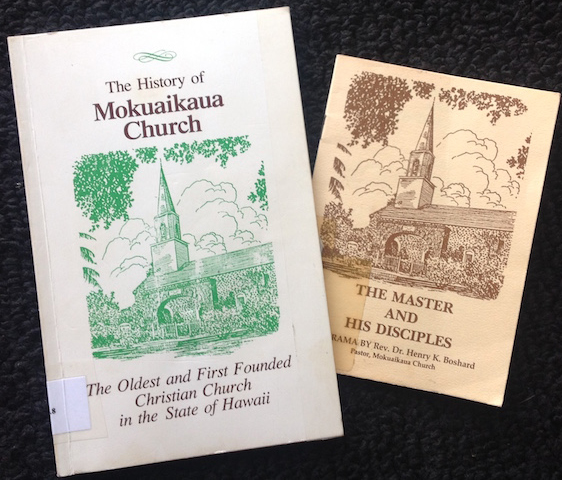
Kahu Boshard is the author of these two publications that are related to the Mokuaikaua Church. The History of the Mokuaikaua Church provides an insightful narrative of the sweep of time that brought native Hawaiians to Hawai‘i over a thousand years ago up to the arrival of the Sandwich Islands Mission in April 1820 and beyond. The Rev. Asa Thurston, co-leader of the first party of the Sandwich Islands Mission, served at Mokuaikaua from the early 1820s up to the years preceding the Civil War. The Master and His Disciples is a drama written and staged by Kahu Boshard for the 165th anniversary of the founding of Mokuaikaua. The drama portrays the story of ‘Ōpūkaha‘ia and his co-adventurer and close friend Thomas Hopu. The script for The Master and His Disciples appears in the booklet, along with very interesting historic photos of the old Hokuloa Church at Punalu‘u (which preceded today’s chapel) and a photo of the beach parcel where ‘Ōpūkaha‘ia lived as a child.
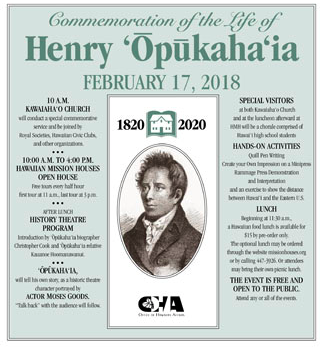 Go to MissionHouses.org for more information.
Go to MissionHouses.org for more information.
